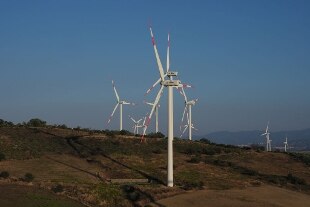Power.
EU, nuclear and gas as sustainable investments
Snam announces 2,700 km hydrogen network by 2030 and focuses on green energy
Share
11 December 2021 Italy is behind in the European Union on renewable sources for electricity production.
From 2015 to 2020, it installed less than 2 gigawatts of wind and 3 gigawatts of solar. In 2020, sun and wind accounted for only 16.5% of Italian electricity production. And the National Energy Plan, the Pniec, foresees that
by 2030 renewables will be 55% of the electricity mix
, while other important European countries foresee at least 75%.
The think tanks on the ecological transition Ember (UK) and Ecco (Italy) write this in a joint study.
According to the research, Austria, Denmark, Germany, Portugal, Spain, Sweden and the Netherlands have targets of at least 75% of renewables in their electricity mix by 2030, while the Italian Pniec (National Integrated Energy and Climate Plan) on the same date only foresees 55%.
The Italian target for wind power is solar is only 34% of consumption
. This is much less than other countries such as Denmark (94%), Holland (72%), Spain (72%), Portugal (54%), Germany (54%) and Greece (47%). The installation of new wind and solar plants in Italy is stagnant, and coal-fired plants are being replaced by gas-fired plants.
The Pniec expects to produce
119 terawatts of electricity from gas by
2030
(one of the highest shares in the EU), 38% of total electricity production.
Ember and Ecco write that "the Italian subsidy mechanism, financed with public money, allows utilities to invest in new thermoelectric plants from 2024 to 2040, thanks to payments of up to 70 euros per kilowatt hour".
But according to the think tanks "generating energy from existing gas plants is
three times more expensive
than from new wind and solar plants".
Furthermore, "Electricity prices have tripled in Italy in the last year" mainly "due to the increase in gas prices".

